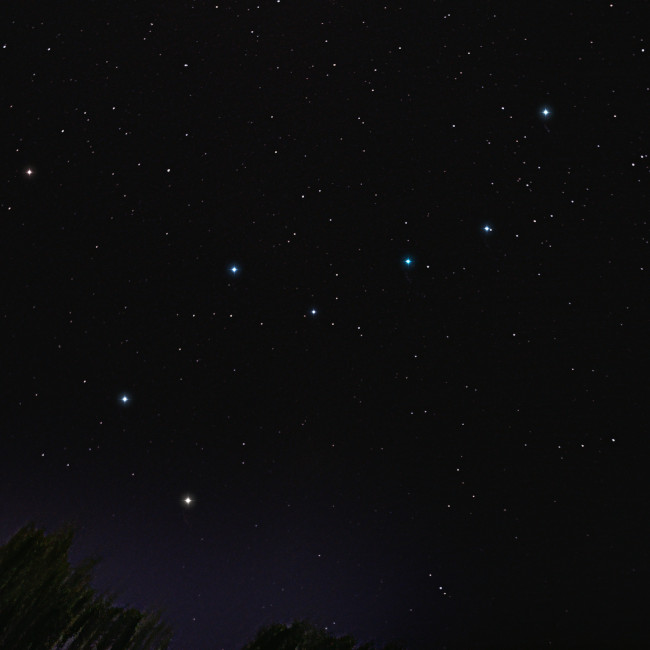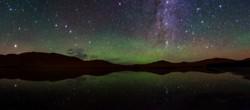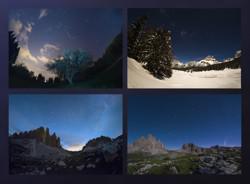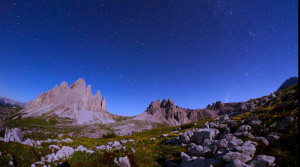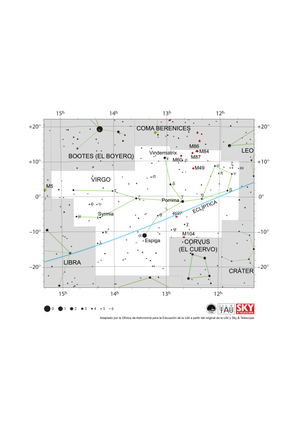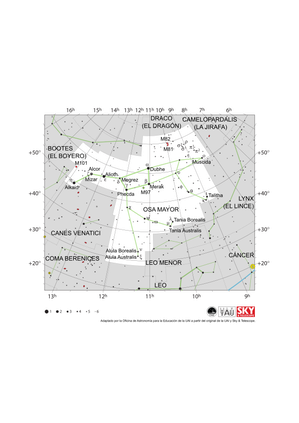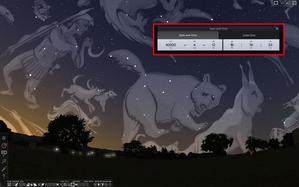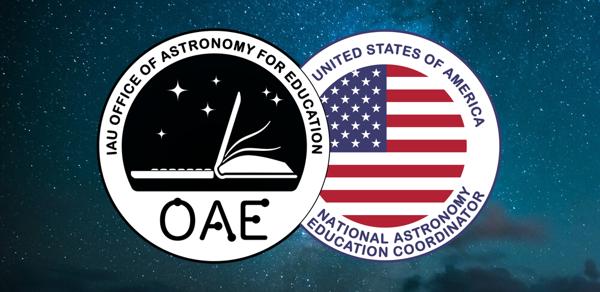Glossary term: Osa Mayor
Description: La Osa Mayor es un conocido patrón estelar (o asterismo, para utilizar el término técnico) que forma parte de la constelación de la Osa Mayor en el cielo boreal. Consta de ocho estrellas: Alkaid, Mizar/Alcor, Alioth, Megrez, Phecda, Merak y Dubhe (Mizar/Alcor es una estrella doble). Las dos últimas estrellas del cuenco de la Osa Mayor pueden utilizarse para localizar la Estrella Polar (Polaris). El hecho de que las ocho estrellas tengan un brillo similar hace que la Osa Mayor sea especialmente notable (aunque Megrez y Alcor son ligeramente más débiles que las demás) y ha sido conocida con diversos nombres en muchas culturas. Las cinco estrellas centrales forman parte de un grupo de estrellas que se mueven juntas por el espacio (la Asociación Estelar de la Osa Mayor). Dubhe es rojiza; las otras siete estrellas son blancas.
Related Terms:
See this term in other languages
Term and definition status: The original definition of this term in English have been approved by a research astronomer and a teacher The translation of this term and its definition is still awaiting approval
The OAE Multilingual Glossary is a project of the IAU Office of Astronomy for Education (OAE) in collaboration with the IAU Office of Astronomy Outreach (OAO). The terms and definitions were chosen, written and reviewed by a collective effort from the OAE, the OAE Centers and Nodes, the OAE National Astronomy Education Coordinators (NAECs) and other volunteers. You can find a full list of credits here. All glossary terms and their definitions are released under a Creative Commons CC BY-4.0 license and should be credited to "IAU OAE".
If you notice a factual or translation error in this glossary term or definition then please get in touch.
Related Media
Constellations from the World
Credit: Stephanie Ye Ziyi/IAU OAE
License: CC-BY-4.0 Creative Commons Reconocimiento 4.0 Internacional (CC BY 4.0) icons
Big Dipper
Credit: Arya Anthony/IAU OAE
License: CC-BY-4.0 Creative Commons Reconocimiento 4.0 Internacional (CC BY 4.0) icons
Dreamlike Starry Sky and Airglow
Credit: Likai Lin/IAU OAE
License: CC-BY-4.0 Creative Commons Reconocimiento 4.0 Internacional (CC BY 4.0) icons
Big Dipper in Four Seasons
Credit: Giorgia Hofer/IAU OAE
License: CC-BY-4.0 Creative Commons Reconocimiento 4.0 Internacional (CC BY 4.0) icons
Big Dipper and Comet Neowise C2020 F3
Credit: Giorgia Hofer/IAU OAE (CC BY 4.0)
License: CC-BY-4.0 Creative Commons Reconocimiento 4.0 Internacional (CC BY 4.0) icons
Related Diagrams
Mapa de la constelación de Virgo
Credit: Adaptado por la Oficina de Astronomía para la Educación de la UAI a partir del original de UAI/Sky & Telescope
License: CC-BY-4.0 Creative Commons Reconocimiento 4.0 Internacional (CC BY 4.0) icons
Mapa de la Constelación de la Osa Mayor
Credit: Adaptado por la Oficina de Astronomía para la Educación de la UAI a partir del original de UAI/Sky & Telescope
License: CC-BY-4.0 Creative Commons Reconocimiento 4.0 Internacional (CC BY 4.0) icons
Related Activities
Moving constellations
astroEDU educational activity (links to astroEDU website) Description: Let's learn how stars in constellations move through time using real astronomical images.
License: CC-BY-4.0 Creative Commons Reconocimiento 4.0 Internacional (CC BY 4.0) icons
Tags:
Software
, Data analysis
, stellarium
, gaia
, hipparcos
, ursa major
Age Ranges:
10-12
, 12-14
, 14-16
, 16-19
, 19+
Education Level:
Middle School
, Secondary
Areas of Learning:
Guided-discovery learning
, Observation based
, Technology-based
Costs:
Free
Duration:
3 hours
Skills:
Analysing and interpreting data
, Asking questions
, Communicating information
, Developing and using models
, Engaging in argument from evidence

